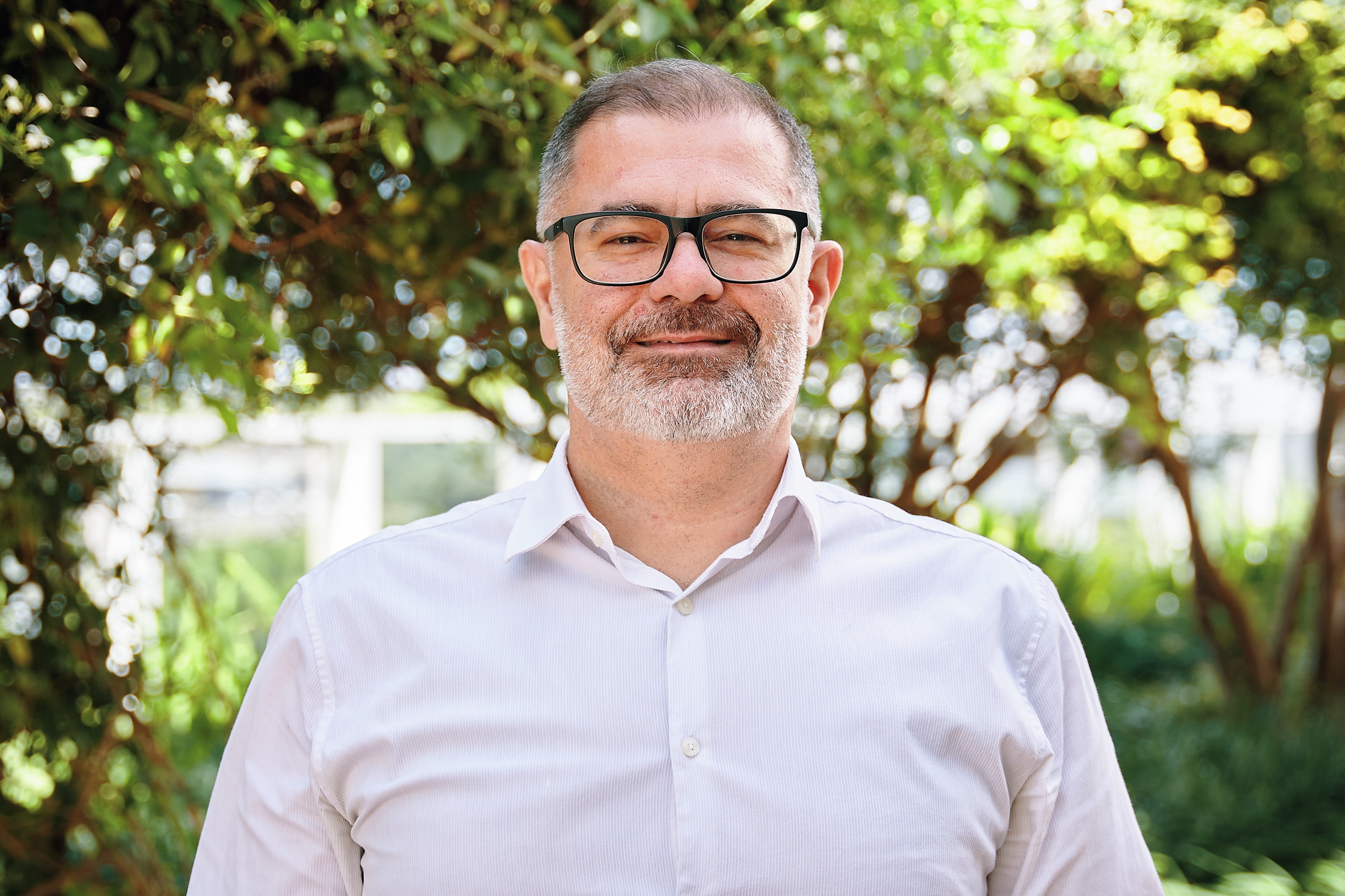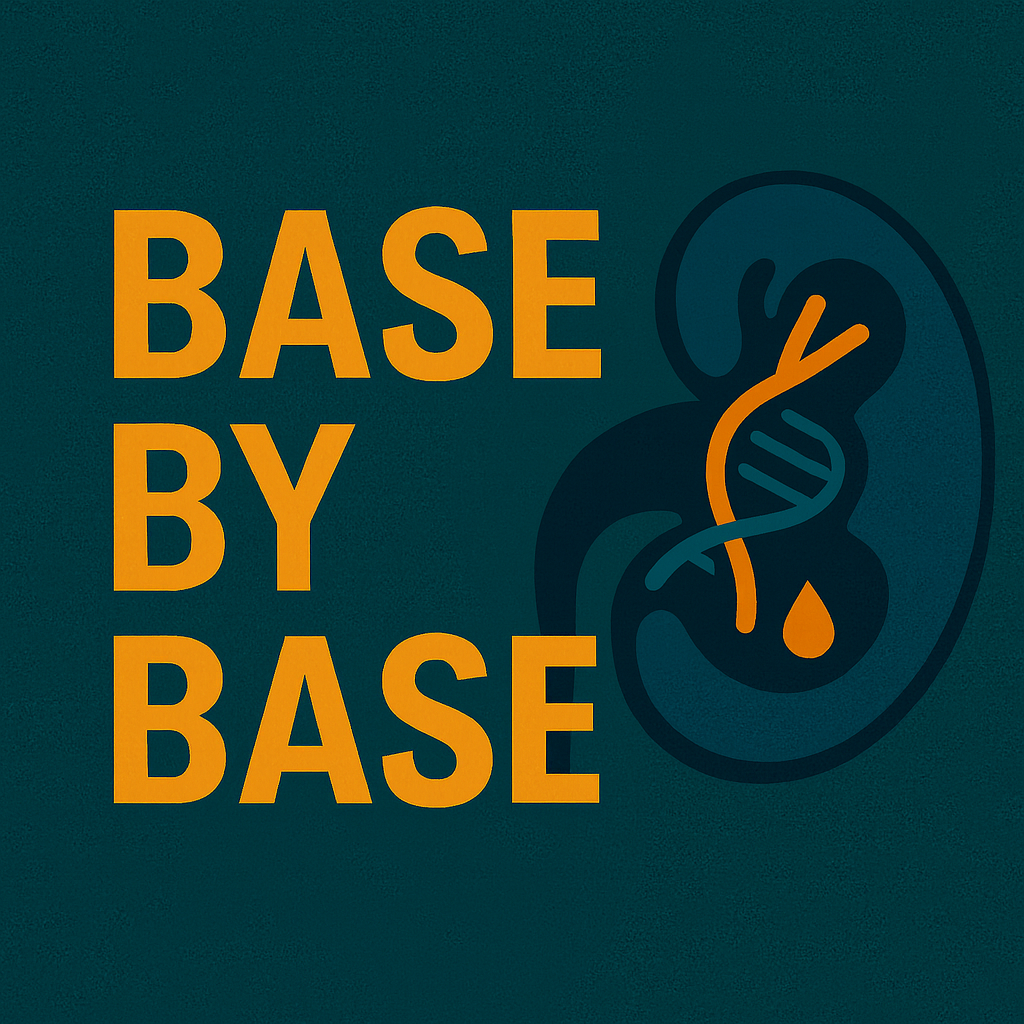Episode Transcript
[00:00:00] Speaker A: Foreign.
Welcome to Base by Base, the papercast that brings genomics to you wherever you are. Okay, let's dive in.
Imagine a genetic condition, right?
It causes these really debilitating tumors.
And the treatments we currently have, well, they offer some help, but honestly, they often hit this frustrating wall. For so many patients, finding a therapy that truly gets to the root cause has been incredibly difficult. And here's a big reason why it's so tough. Yeah, we're often dealing with what you could call a broken off switch in the cell, not an overactive on switch.
[00:00:47] Speaker B: Yeah, that's a really key distinction in cancer biology. When you have an oncogene that's just stuck on driving growth like crazy, we can often design drugs to block it to inhib activity.
[00:00:59] Speaker A: Right.
[00:00:59] Speaker B: But with the tumor suppressor gene, like the one we're talking about today, its whole job is to stop tumors. So when it loses its function, when that off switch is broken, you're not trying to inhibit something overactive. You're trying to compensate for something that's missing. And that's just a much trickier therapeutic problem to solve.
[00:01:15] Speaker A: Absolutely. It's a fundamental challenge, and for way too long that's been the reality for many patients. But what if. What if a recent deep dive has not only picked apart this complex problem, but actually pinpointed a direct cross critical target? A target for these really tough to treat cancers, maybe offering a new lifeline? That's exactly what we're getting into today.
So today we want to celebrate the fantastic work of the researchers at the University of California, San Francisco, UCSF and all their collaborators. They've really pushed forward our understanding of neurofibrimin function and crucially, potential therapeutic targets for NF1 related cancers. A big shout out to the lead authors, Hirishins and vasudevan and Frank McCormick and their whole team for this really pivotal publication in PNAS back on June 30, 2025. So for you listening, what's the basic problem these scientists are tackling? Why is this research so important?
[00:02:07] Speaker B: Okay, so the heart of the issue is neurofibromatosis type 1, or NF1. It's actually a relatively common genetic disorder called a congenital cancer predisposition syndrome. It's caused by mutations in the NF1 gene. And this NF1 gene, it produces a really vital protein called neurofibramine. Now, what's interesting about neurofibromin is its job. It acts as a ROS GT pace, activating protein, a gap.
Yeah. Basically think of it as a critical off switch for something called ROS signaling. It helps keep cell growth and division under tight control.
[00:02:39] Speaker A: So neurofibrimin is meant to keep ROS in check. How does that broken off switch, you know, actually play out inside the cell? What are the consequences for patients?
[00:02:47] Speaker B: Well, when neurofibrimin is lost or mutated, that crucial off switch is just gone. This leads to RAS signaling becoming misactivated, basically unchecked. And this unchecked RAS activity then kicks a major downstream pathway into high gear. The raf meker pathway.
[00:03:05] Speaker A: Ah, that pathway comes up a lot in cancer research.
[00:03:07] Speaker B: It really does. And here it acts like a powerful gas pedal for cell proliferation and ultimately tumor formation. That's why NF1 patients have a higher risk of developing tumors in their peripheral nervous system, like plexiform neurofibromas. And sometimes these can even become more aggressive malignant tumors.
[00:03:23] Speaker A: Understood.
So this pathway is running wild.
What have the main treatments been so far? And, you know, what are the limitations? What challenges do patients face?
[00:03:34] Speaker B: Well, for these NF1 associated peripheral nervous system tumors, drugs called MEK inhibitors like silimatinib have actually been approved. They do offer some hope. They target a part of that overactive rafmaker pathway just further downstream.
[00:03:49] Speaker A: Okay, so downstream intervention.
[00:03:51] Speaker B: Exactly. But these therapies face pretty significant hurdles. Resistance often develops, patients stop responding. And the therapeutic window, the dose range, where it works without causing too many problems. It's quite narrow.
[00:04:04] Speaker A: Meaning side effects.
[00:04:05] Speaker B: Yeah, that often means considerable side effects or maybe the response just isn't great. It limits their long term effectiveness for a lot of people.
[00:04:13] Speaker A: So these current treatments are hitting some serious walls, especially for patients who really need other options. Where did the researchers go from there? What was the next step?
[00:04:21] Speaker B: Yeah, this really underscores the urgent need, the unmet need for better strategies, especially for those who don't respond well or just can't tolerate the MEK inhibitors we have now, the big goal is finding ways to hit other parts of this pathway effectively, whether that's, you know, upstream inputs or different downstream outputs of rays.
[00:04:39] Speaker A: Okay, so tackling such a complex and urgent problem. Wow. The team used a really impressive toolkit, didn't they? It sounds like they went full molecular detective mode. Yeah, like mapping out the whole network, not just the initial problem.
How did they systematically break down neurofiberman's function?
[00:04:55] Speaker B: That's a great way to put it. Molecular detectives. They started by creating really precise cell models using something called CRISPR interference or CRISPR.
[00:05:03] Speaker A: CRISPR, okay.
[00:05:04] Speaker B: Yeah, they used it to specifically repress or turn down the NF1 gene. They also did this for other related genes like PTPM11 and SOS2. They did this in immortalized peripheral nerve cells, IPN cells. This let them carefully mimic the loss of NF1 function in the lab, giving them a really clear before and after.
[00:05:23] Speaker A: All right, so recreating the disease in a dish, basically a controlled environment.
Once they had these models, what kind of data did they collect? Sounds like a lot.
[00:05:32] Speaker B: It was comprehensive. They used a powerful multi omics approach.
Several techniques combined for, well, a holistic view. First, RNA sequencing that let them see global changes in gene expression. Which genes were turned up or down.
[00:05:48] Speaker A: Okay. The blueprints, kind of.
[00:05:50] Speaker B: Then phosphoroproteomic mass spectrometry, ptm Ms. Super interesting. It basically let them see which proteins were active, which signaling pathways were firing. Think of it like checking which levers are pulled in a complex machine. Right. It shows the activity.
[00:06:04] Speaker A: Ah, I see. Not just the parts list, but what the machine is actually doing. That's powerful.
[00:06:08] Speaker B: Exactly. Then they did extensive pharmacologic analysis. They tested how these NF1 deficient cells responded to different drugs, including the MEK inhibitor selenitinib, also SHP2 inhibitor, RMC4550, and SOS1 inhibitor. So they could probe different points in the pathway. But here's a really cool bit. They used proximity labeling, mass spectrometry. They tagged neurofibromin with something called apex. This acts like a sort of molecular radar, identifying other proteins that get physically really close to neurofibromin in inside living cells.
[00:06:41] Speaker A: Whoa.
[00:06:42] Speaker B: Yeah. It gave them huge clues about neurofibermin's direct partners. Its inner circle. You could say.
[00:06:48] Speaker A: That is incredibly detailed. So after all that digging, what were the absolute bombshell discoveries? What really shifted their understanding of NF1 tumors?
[00:06:57] Speaker B: Well, the first findings on just the impact of losing NF1 were really eye opening. When they repressed NF1 in those IPN cells, they saw a big jump in active Ras, the Ras GTP levels, and of course, hyperactivation downstream. Like perk C growth signals. Yes. And crucially, these cells also showed significantly increased growth. And they promoted something called de differentiation.
[00:07:19] Speaker A: De differentiation, meaning less specialized.
[00:07:21] Speaker B: Exactly. The cells kind of revert to a more primitive, aggressive state. It's a hallmark of many advanced cancers, this uncontrolled nature.
[00:07:29] Speaker A: So losing NF1 doesn't just fuel growth, it actually makes the cells more dangerous, more primitive.
[00:07:33] Speaker B: Right.
[00:07:33] Speaker A: And you mentioned a link to the current therapy.
[00:07:35] Speaker B: Yes, precisely. This was critical these NF1 deficient IPNs show decreased sensitivity to the MEK inhibitor silimetinib.
And this isn't just a small detail. It's huge. The very thing causing the tumors, the NF1 loss, also makes them resistant to our main current drug. It really exposes a fundamental flaw in the current strategy and helps explain why patients often develop resistance.
[00:07:57] Speaker A: Wow. That's a real double edged sword for patients. Okay, so if the current MEK inhibitors struggle, what did they find when they looked upstream? Things like SHB2 or SOS1.
[00:08:08] Speaker B: Right. They look at targets like SHP2, which comes from the PTPN11 gene, and also SOS1 and SOS2, other RAS activators. Interestingly, when they genetically repressed PTPN11, knocking down SHP2, they saw the opposite effects of NF1 loss.
[00:08:23] Speaker A: The opposite?
[00:08:24] Speaker B: Yeah, it decreased cell proliferation and actually promoted differentiation, pushing cells towards being more normal.
[00:08:30] Speaker A: Okay, that sounds promising.
[00:08:31] Speaker B: And those cells were also more sensitive to selimetinib. So targeting SHP2 looked like a potentially good idea. But when they tried inhibiting SOS1 another activator, the results were underwhelming. Limited efficacy in the IPN cells, huh?
[00:08:47] Speaker A: Why was that?
[00:08:47] Speaker B: Good question. The team figured it out. It was largely due to compensation by SOS2. Another protein stepped in to do the job.
[00:08:55] Speaker A: Ah, the molecular relay race again.
[00:08:57] Speaker B: Exactly. When they combined SOS1 inhibition with also genetically repressing SOS2, then the response significantly improved. It just highlights how tricky these pathways are with all these backup systems.
[00:09:08] Speaker A: So you almost have to block multiple points sometimes. What about SHB2 versus SOS1 head to head?
[00:09:13] Speaker B: Yeah, when they compared them across various NF1 mutant tumor cell lines, actual patient derived cells from plexiform neurofibromas. And the more aggressive MPNST's SHP2 inhibition generally gave a better biochemical response than SOS1 inhibition. Okay, this again pointed to that SOS2 compensation issue, limiting the SOS1 drugs. But the real breakthrough, the moment things really clicked, came from that proximity labeling experiment.
[00:09:37] Speaker A: The molecular radar?
[00:09:38] Speaker B: That's the one. It identified Kras. Kras as the only race family member.
[00:09:44] Speaker A: Only Kras. Not ATRAS or nras, just Kras.
[00:09:47] Speaker B: It was the only one that showed significantly increased proximity to neurofibromin in these nerve cells. Especially when they treated the cells with solometinib.
[00:09:55] Speaker A: Okay, hold on. That's huge. We usually talk about the Reis family, but you're saying in this context it's specifically Kras that neurofibromin is interacting with most closely.
[00:10:04] Speaker B: That's what the data strongly suggested. And more than that, when they looked at the whole network of proteins close to neurofibro, KRAS stood out. It was the most highly interconnected signaling node.
[00:10:15] Speaker A: The central hub.
[00:10:16] Speaker B: Pretty much, yeah. Pointing to KRAS as the key player in this peripheral nervous system setting. And the really exciting part, when they tested a pan KRS inhibitor, a drug called BI2865 that blocks KRAs, it powerfully suppressed PAR K activation and also CDK12 activation, which drives the cell cycle in.
[00:10:35] Speaker A: The actual NF1 tumor cells.
[00:10:37] Speaker B: Yes. In NF1 mutant plexiform neurofibroma cells. This strongly suggests that if you directly block TERROR as, you can effectively shut down that whole problem pathway, the rafmecric signaling, and stop the tumor cells from dividing.
[00:10:50] Speaker A: Okay, so for you listening, this feels like a major shift. What does this discovery really mean for NF1 patients who are struggling with current options? And what about the bigger picture for personalized cancer therapy?
[00:11:01] Speaker B: It's potentially transformative, really, for a few key reasons. First, realizing that the NF1 deficient tumor cells actually respond poorly to MEA inhibitors, while the surrounding healthy cells respond better. That highlights a major limitation of current treatments.
[00:11:16] Speaker A: A therapeutic window problem.
[00:11:18] Speaker B: Exactly. It tells us we need more precise approaches to widen that window, improve efficacy for patients, and hopefully reduce side effects.
[00:11:25] Speaker A: Which explains why the current drugs, while helpful for some, aren't the silver bullet.
[00:11:29] Speaker B: Correct. Now, the central finding, the big one, is that KRAS seems to be the key catalytic target of neurofibri gap activity, specifically in the peripheral nervous system.
This is really significant because, you know, previous work had suggested maybe neurofibrimin regulates different rise proteins in different tissues. Ah, context matters hugely here. We have strong evidence that in the PNS context, KRAS is the main guy. And this suggests that directly inhibiting KRAS might be a more effective, maybe even a cleaner way to treat these NF1 mutant tumors, rather than just hitting downstream pathways or upstream activators.
[00:12:06] Speaker A: Right.
[00:12:07] Speaker B: It offers a really crucial alternative, especially for patients who don't respond to MEK inhibitors or just can't tolerate them.
[00:12:13] Speaker A: So instead of trying to mop up the downstream mess, we might be able to go straight to the source, the primary driver. That sounds incredibly promising for potentially more effective, less toxic treatments.
[00:12:24] Speaker B: It really does. And you know, the detailed look at SHP2 and SOS1 SOS confirms their roles, but it also underlines those complexities. Like the SOS2 compensation. It suggests maybe some upstream strategies will need combination approaches to work well, whereas hitting Krasno directly looks potentially more robust on its own.
[00:12:43] Speaker A: Okay, are there limitations though, things we still need to be cautious about?
[00:12:46] Speaker B: Oh, absolutely. It's important. Science always acknowledges limitations. These cell culture models, the IPNs and tumor cell lines, they're powerful tools, but they might not perfectly capture the whole complex environment inside a human tumor. The in vivo situation. Plus we need more research to understand how resistance to care as inhibition itself might develop.
Could other race proteins eventually step in and compensate then? That's a possibility.
[00:13:11] Speaker A: So huge progress, but still quotients to answer what are the immediate next steps coming out of this research?
[00:13:17] Speaker B: Well, future work definitely needs to dig deeper into why. Why does neurofibromin seem to prefer KRAS in the peripheral nervous system? Is it about how the proteins are modified after they're made or where they are located inside the cell? That mechanism needs exploring.
Also understanding how MEK inhibition actually seems to increase that neurofibrimin KRA association. That could reveal some interesting feedback loops we didn't know about. But overall these findings really do pave the way for hopefully a much more personalized and effective approach to tackling these NF1 driven cancers.
[00:13:51] Speaker A: Okay, if you had to boil this whole deep dive down to just a couple of sentences, what's the absolute core message you want our listener to take away?
[00:13:58] Speaker B: I'd say this this really comprehensive study looking deep into neurofibrimin function shows that when the NF1 tumor suppressor gene is lost, it primarily results in unchecked KRAS activity, the specifically in peripheral nerve tumors. And because of that, targeting Kris directly now looks like a really promising therapeutic strategy offering a potential breakthrough for patients who currently don't have great options.
[00:14:22] Speaker A: Wow. This journey into NF1 and KRAS, it really does shift the perspective on how we might tackle these tough broken off switch tumors. And for you, our listener, it leaves us with a pretty fascinating thought. If zeroing in on the primary driver like KRAS here unlocks this much potential for these kinds of diseases, where else, where else in the vast landscape of genetic conditions might a similar singular, powerful therapeutic weak spot be just waiting for us to uncover it? This Deep dive was based on an Open Access article under the CCBY 4.0 license. You can find a direct link to the paper and the license in our episode description. If you enjoyed this, follow or subscribe on your podcast app and leave a five star rating. If you'd like to support our work, use the donation link in the description. Thanks for listening and join us next time as we explore more science base by base.




